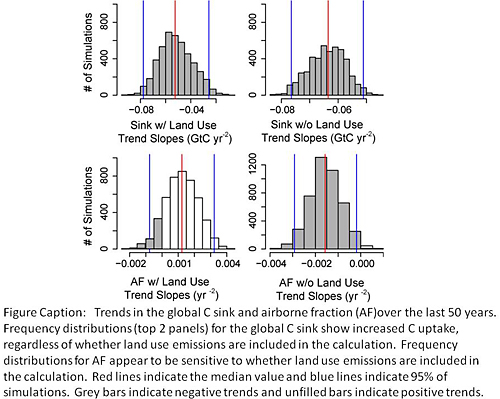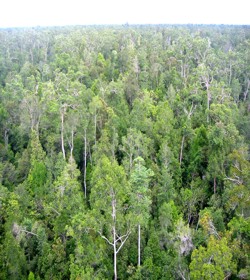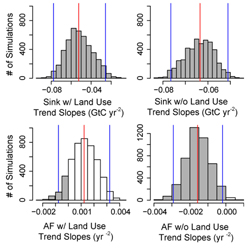Science Highlight
Increase in observed net carbon dioxide uptake by land and oceans during the past 50 years
Ballantyne AP, Alden CB, Miller JB, Tans PP, White JWC.
Published 2 August 2012
Vol. 488 no. 7409 pp. 70-+, DOI:10.1038/nature11299
Lead
It is predicted that the Earth has a limited capacity to take up atmospheric CO2 and that when this capacity is reached more CO2 emissions will remain in the atmosphere thus accelerating human-induced warming. Although numerous studies suggest the so-called C sinks on land and in the ocean may becoming limited, we see no evidence of this based on global measurements of atmospheric CO2 and estimates of CO2 emissions. In fact, the Earth continues to lend us a hand by taking up twice as much atmospheric CO2 as 50 years ago. Therefore how long C sink capacity continues to grow at the global scale remains an important research question.
Paper Abstract
One of the greatest sources of uncertainty for future climate predictions is the response of the global carbon cycle to climate change. Although approximately one-half of total CO2 emissions is at present taken up by combined land and ocean carbon reservoirs, models predict a decline in future carbon uptake by these reservoirs, resulting in a positive carbon-climate feedback. Several recent studies suggest that rates of carbon uptake by the land and ocean have remained constant or declined in recent decades. Other work, however, has called into question the reported decline. Here we use global-scale atmospheric CO2 measurements, CO2 emission inventories and their full range of uncertainties to calculate changes in global CO2 sources and sinks during the past 50 years. Our mass balance analysis shows that net global carbon uptake has increased significantly by about 0.05 billion tonnes of carbon per year and that global carbon uptake doubled, from 2.4 +/- 0.8 to 5.0 +/- 0.9 billion tonnes per year, between 1960 and 2010. Therefore, it is very unlikely that both land and ocean carbon sinks have decreased on a global scale. Since 1959, approximately 350 billion tonnes of carbon have been emitted by humans to the atmosphere, of which about 55 per cent has moved into the land and oceans. Thus, identifying the mechanisms and locations responsible for increasing global carbon uptake remains a critical challenge in constraining the modern global carbon budget and predicting future carbon-climate interactions.

Manuscript
- Download paper from Nature: http://www.nature.com/nature/journal/v488/n7409/full/nature11299.html?WT.ec_id=NATURE-20120802
- Contact lead author: Ashley Ballantyne
| Illustrative Photos (available free if credited as specified) | ||
|---|---|---|
 |
 |
Tropical Forest remove large quantities of atmospheric carbon dioxide (Borneo depicted). |
Southern ocean waves |
 |
 |
Sunset with clouds over ocean. |
Graph from the paper. |
|
